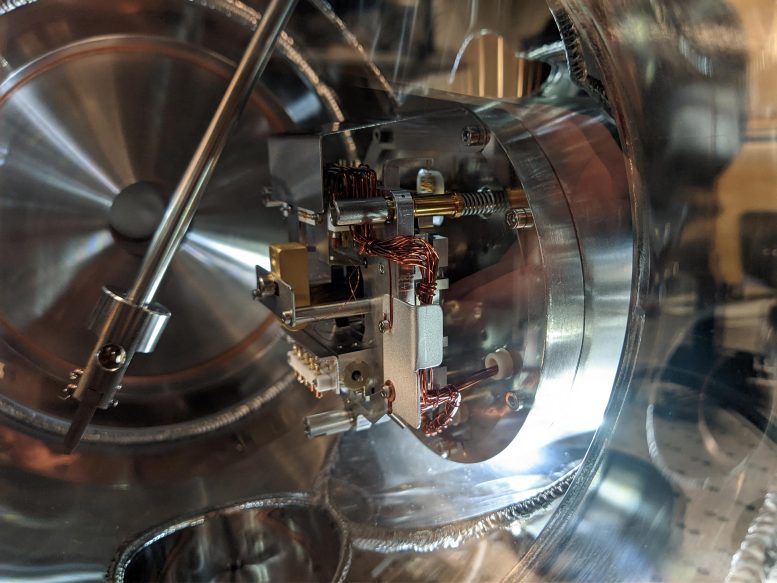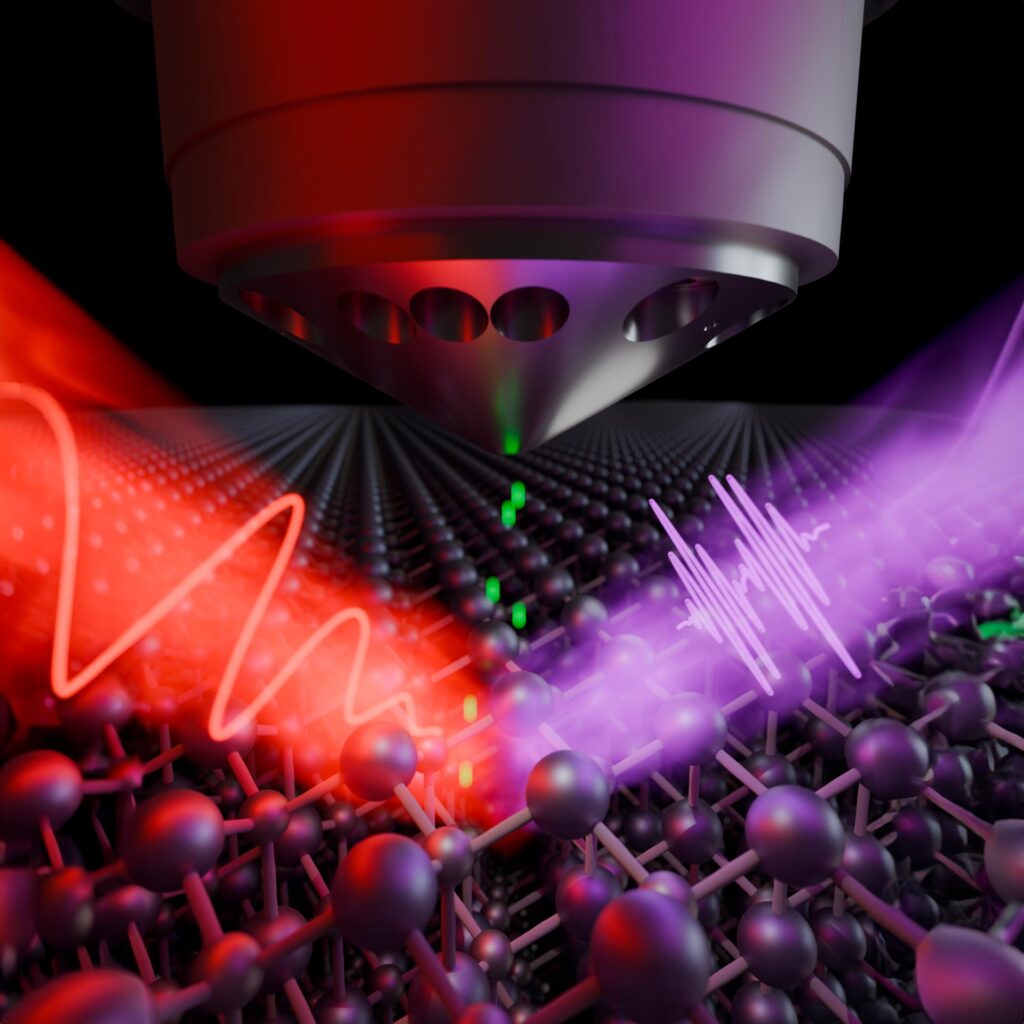Schematic representation of the experimental setup: Attosecond pulses (violet) eject electrons (green) from a crystal surface. The photoemission electron microscope (cone-shaped instrument at top) examines the rapid movements of the electrons. Credit: Jan Vogelsang, edited
A groundbreaking study by a Swedish-German team has tracked ultrafast electron dynamics with unparalleled precision, opening new avenues in nanomaterial and solar cell research.
When electrons move within a molecule or semiconductor, this occurs on unimaginably short time scales. A Swedish-German research team including physicist Dr. Jan Vogelsang from the University of Oldenburg has now made significant progress towards a better understanding of these ultrafast processes: The researchers were able to track the dynamics of electrons released from the surface of zinc oxide crystals using laser pulses with spatial resolution in the nanometer range and at previously unattained temporal resolution.
Advancements in Electron Behavior Research
With these experiments, the team demonstrated the applicability of a method that could be used to better understand the behavior of electrons in nanomaterials and new types of solar cells, among other applications. Researchers from Lund University, including Professor Dr Anne L’Huillier, one of last year’s three Nobel laureates in physics, were involved in the study, which was published in the science journal Advanced Physics Research.

Looking into the vacuum chamber of the Photoemission Electron Microscope in Lund: The research team used a similar device to study electrons that had been released from a sample using laser pulses. Credit: Jan Vogelsang
In their experiments, the research team combined a special type of electron microscopy known as photoemission electron microscopy (PEEM) with attosecond physics technology. The scientists use extremely short-duration light pulses to excite electrons and record their subsequent behavior. “The process is much like a flash capturing a fast movement in photography,” Vogelsang explained. An attosecond is incredibly short – just a billionth of a billionth of a second.
Combining Advanced Techniques for Improved Accuracy
As the team reports, similar experiments had so far failed to attain the temporal accuracy required to track the electrons’ motion. The tiny elementary particles whizz around much faster than the larger and heavier atomic nuclei. In the present study, however, the scientists were able to combine the two technologically demanding techniques, photoemission electron microscopy and attosecond microscopy, without compromising either the spatial or temporal resolution. “We have now finally reached the point where we can use attosecond pulses to investigate in detail the interaction of light and matter at the atomic level and in nanostructures,” said Vogelsang.
Technological Breakthroughs and Future Research
One factor that made this progress possible was the use of a light source that generates a particularly high quantity of attosecond flashes per second – in this case, 200,000 light pulses per second. Each flash released on average one electron from the surface of the crystal, allowing the researchers to study their behavior without them influencing each other. “The more pulses per second you generate, the easier it is to extract a small measurement signal from a dataset,” explained the physicist.
Anne L’Huillier’s laboratory at Lund University (Sweden), where the experiments for the present study were carried out, is one of the few research laboratories worldwide with the technological equipment required for such experiments. Vogelsang, who was a postdoctoral researcher at Lund University from 2017 to 2020, is currently in the process of setting up a similar experimental laboratory at the University of Oldenburg. In the future, the two teams plan to continue their investigations and explore the behavior of electrons in various materials and nanostructures.
Reference: “Time-Resolved Photoemission Electron Microscopy on a ZnO Surface Using an Extreme Ultraviolet Attosecond Pulse Pair” by Jan Vogelsang, Lukas Wittenbecher, Sara Mikaelsson, Chen Guo, Ivan Sytcevich, Anne-Lise Viotti, Cord L. Arnold, Anne L’Huillier and Anders Mikkelsen, 03 December 2023, Advanced Physics Research.
DOI: 10.1002/apxr.202300122
Vogelsang has headed the Attosecond Microscopy research group at the University of Oldenburg since 2022. The group is funded by the German Research Foundation’s prestigious Emmy Noether Programme.


